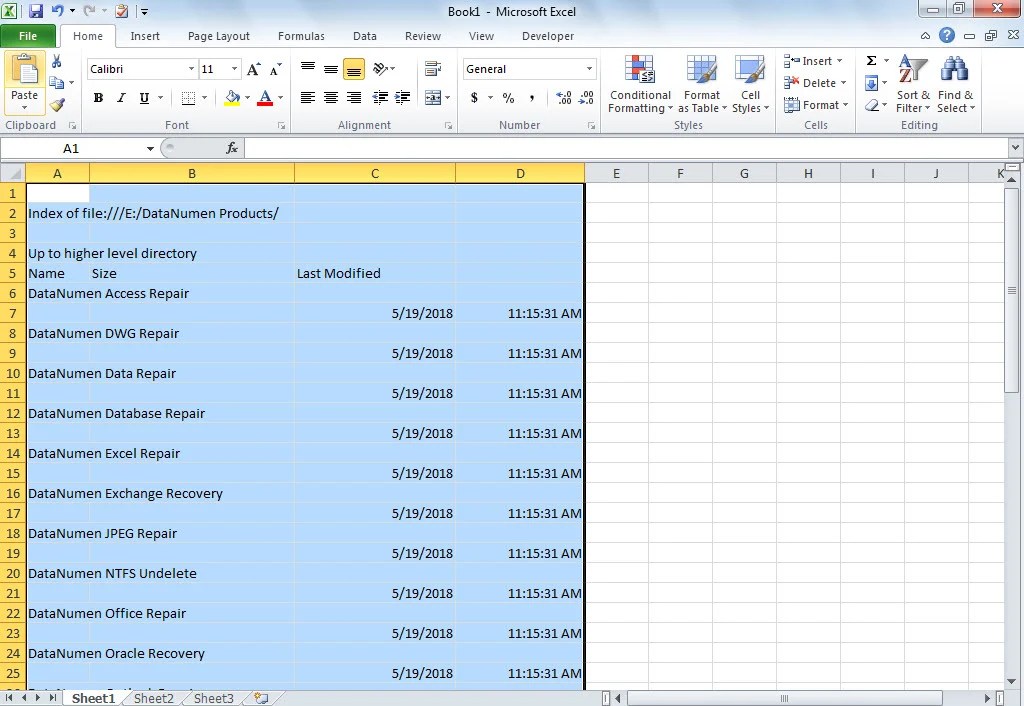Easily Retrieve Excel Sheet Names with a Simple Formula

When working with Microsoft Excel, understanding how to manage and navigate through multiple sheets within a workbook is crucial. Whether you're compiling data, analyzing trends, or preparing reports, knowing the names of sheets can significantly enhance your productivity. This blog post will guide you through various methods to easily retrieve Excel sheet names using simple formulas, making your Excel experience more efficient.
What Are Sheet Names and Why They Matter

Before diving into the formulas, let's understand what sheet names are and why they are important:
- Definition: Sheet names in Excel are the labels you assign to the different tabs or sections of a workbook, which helps in organizing and identifying data sets.
- Importance: Having well-named sheets simplifies navigation, data management, and can prevent data misplacement or misinterpretation.
- Usage: Sheet names can be used in formulas to reference data from different sheets dynamically.
Method 1: Using The CELL() Function

The CELL() function in Excel can provide detailed information about the characteristics of a cell, including sheet names:
- Open your Excel workbook.
- Select an empty cell where you want to display the sheet name.
- Enter the following formula:
=MID(CELL("filename",A1),FIND("]",CELL("filename",A1))+1,255)
Here's what each part of the formula does:
CELL("filename", A1)- Returns the full path and name of the current workbook.FIND("]",CELL("filename",A1))- Locates the position of the "]" in the filename string, which separates the path from the workbook name.MID(...)- Extracts the sheet name by starting from the character after the "]" and continuing until the end.
⚠️ Note: This formula must be entered in a cell that has not been edited since the workbook was opened, otherwise, it might return the sheet name from when the cell was last edited.
Method 2: Using Defined Names

Another approach to get sheet names is by using defined names:
- Go to the Formulas tab and click on Name Manager.
- In the Name Manager dialog, click New.
- In the New Name dialog, enter the following settings:
- Name:
GetSheetNames - Refers to:
=REPLACE(GET.WORKBOOK(1),1,FIND("]",GET.WORKBOOK(1)),)
- Name:
- Click OK.
- Now you can use
=GetSheetNamesin any cell to display the current sheet's name.
💡 Note: Defined names are dynamic, meaning they will automatically update if sheet names change.
Method 3: Using VBA (Visual Basic for Applications)

For users comfortable with VBA, here's how you can retrieve sheet names programmatically:
- Press Alt + F11 to open the VBA Editor.
- Insert a new module by right-clicking on any object in the Project Explorer and choosing Insert > Module.
- Paste the following VBA code:
Function GetSheetNames() As String Dim sh As Worksheet Dim output As String For Each sh In ThisWorkbook.Sheets output = output & sh.Name & vbNewLine Next sh GetSheetNames = output End Function - Close the VBA Editor, then in any cell, you can use the formula
=GetSheetNames()to retrieve a list of all sheet names.
Advanced Techniques

If you want to create a list of all sheet names in the workbook:
- Use the VBA method described above and enter the formula in multiple cells for each sheet.
- Or combine it with Excel's Dynamic Array functionality (Excel 365 or Excel 2021) to get all sheet names in one go:
=FILTER(SHEETS("Sheet1"),SHEETS("Sheet1")<>"")
📌 Note: The Dynamic Array function `FILTER` might not work in older versions of Excel; you would need to rely on the VBA method or manual data entry.
Summarizing Key Points

Throughout this exploration of retrieving Excel sheet names, we've delved into several methods:
- Using the CELL() function to capture the current sheet's name dynamically.
- Creating Defined Names to reference sheet names easily.
- Leveraging VBA for programmatic retrieval of sheet names.
- Employing Advanced Techniques like dynamic arrays for listing all sheet names.
By mastering these techniques, you can significantly improve your efficiency when working with large and complex workbooks. Remember, while these methods make life easier, the key to effective data management lies in a well-structured and organized workbook from the outset.
What if my sheet names have special characters?

+
The methods described will generally handle special characters well, but if you encounter issues, especially with the CELL() function or VBA, you might need to adjust the code to account for these characters.
Can I change sheet names through VBA?

+
Yes, you can change sheet names using VBA. Here’s a basic example of how to do it:
Sub RenameSheet()
Dim sheet As Worksheet
Set sheet = ThisWorkbook.Sheets(“OldSheetName”)
sheet.Name = “NewSheetName”
End SubHow often should I use these methods to retrieve sheet names?

+
Use these methods as needed, particularly when you’re dealing with workbooks where sheets are frequently added or renamed, or when you need to reference sheet names dynamically in formulas.



